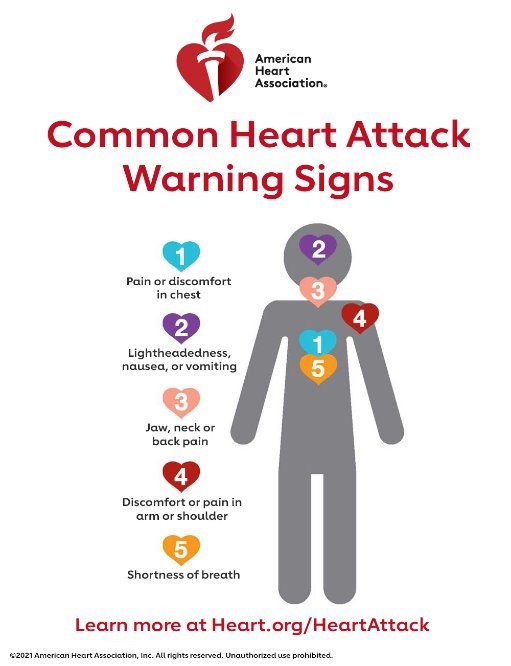Signs and Symptoms of a Heart Attack
 By Dr. Vanessa Brown
By Dr. Vanessa Brown
Have you ever had chest pain and wondered: Hey, am I having a heart attack? If so, you are not alone. According to the CDC, 805,000 people each year in the United States suffer from a heart attack. Of these people, 605,000 are having a heart attack for the first time.
A heart attack is the leading cause of death in the United States as well as Worldwide. It occurs when a clot or blockage forms in the blood vessels supplying the heart, called coronary artery. The heart is a muscle that helps pump blood to the rest of the body. When the heart does not receive oxygen rich blood, a part of it begins to die.
There are medicines (like aspirin) and procedures like cardiac catheterization (kath-uh-tur-ih-ZAY-shun)—where a cardiologist goes in with a catheter to open the clogged artery up and place a stent. When done in a timely fashion, these treatments can save heart muscle and in turn save lives. But early recognition is key.
While not all chest pain represents a heart attack, it is important to know the signs and symptoms. Symptoms of a heart attack can be immediate and intense. When this happens, an individual can have discomfort in the chest and/or other areas of the upper body, shortness of breath, cold sweats, and/or nausea or vomiting. However, for most people, the same symptoms often build over time. They can persist for hours, days or weeks before a heart attack occurs. The longer a person waits to seek emergency medical attention, the greater the damage occurs.
And of course, women can often have different heart attack symptoms than men. This includes shortness of breath, nausea/vomiting, back or jaw pain.
Bottom line: Even if you are not sure it is a heart attack, call 911 or go to your nearest ER, for evaluation and treatment.

